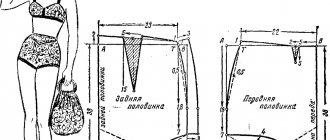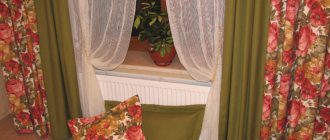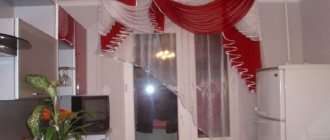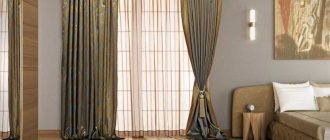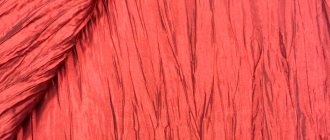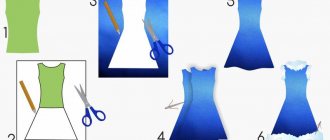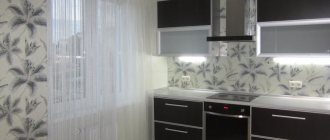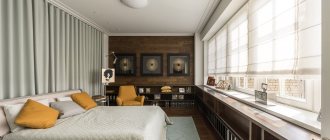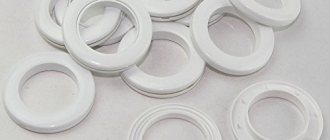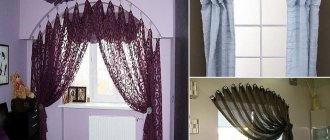A little history
Tapestry - to understand what kind of fabric it is, its history will give us the answer. Tapestry as a technique of weaving threads appeared during the reign of the ancient Egyptian pharaohs. This material depicted biblical, ornate, antique subjects and ornaments. In those days they were done manually and the cost was very high. But then, with the development of world industry, they began to be performed on weaving machines.
Tapestry fabric got its name in the 17th century, this happened when 2 French brothers (their last name was Gobelin) opened the production of dense decorative fabrics. But since the 18th century, the concept of tapestry fabric materials included exclusively hand-woven, double-sided, heavy textiles.
Interestingly, both ordinary people and experts call this name almost any heavy fabric that has been woven by hand or using special equipment and is used to decorate clothes, cover flooring, walls or furniture.
Find out why chenille is interesting in another article.
Antique, photo:
Products
Curtains, bedspreads and covers for sofas, beds, and pillowcases are made from this material. You can find home decorations such as napkins, tablecloths, and panels. There is a separate direction in tapestry products - icons. They not only decorate the room, but also serve as a symbol of well-being and peace in the house.
Unusual headboard design
Composition and characteristics
Tapestry is a cotton or synthetic fabric, the production features of which depend on the intended use. The composition of the tapestry fabric will depend on the manufacturing method and the intended use of the textile.
The composition of tapestry material in the modern world includes:
- polyester;
- wool;
- silk;
- cotton;
- acrylic;
- viscose;
Expensive models with a sophisticated appearance are made from cotton, while “serial” models are made from a synthetic base (they have increased wear resistance).
Features of care
It is better not to clean material such as tapestry yourself. Small items can still be put into the machine for gentle treatment, but larger items are better dry cleaned.
When choosing, we take into account the color and stylistic design of the room
On any tapestry product there is a small instruction from the manufacturer on how to care for the product. These rules must be strictly followed in order for the item to last as long as possible.
Advantages and disadvantages
Any description of tapestry fabric will necessarily say about the beauty and visual appeal of this type of textile, but the advantages also include:
- strength,
- chemical resistance,
- durability,
- ease of care,
- versatility of application.
See the description of the Cordura material at the link.
However, this material also has some disadvantages. The main ones:
- high price
- relatively heavy weight
Under normal conditions of use, you may not encounter any shortcomings at all.
Composition and properties
At the moment, the tapestry is a dense jacquard fabric. In this case, the base is most often linen, but the weave threads can be natural (wool, silk), or synthetic, or of a mixed composition. The material in question has a lot of advantages :
- Strength. Due to the complex weaving, as well as special threads, this material will last for many years as a carpet or as a tapestry bedspread; it rarely gets damaged.
- Easy to care for.
- Variety of patterns and bright colors.
- Tapestry fabric is pleasant to the touch.
- Thanks to its antistatic properties, dust almost does not settle on it.
Application: how to use?
In the photo of tapestry fabric you can see that this material is most often used for upholstery. Indeed, in recent years, tapestry fabrics have been positioned exclusively as furniture fabrics, but in reality the scope of their use is quite wide. Despite the fact that tapestry fabric is considered exclusively “furniture” in the modern textile industry, its scope of application is quite wide.
Products:
- Decor: it is also used for upholstering walls indoors to create an interesting and unusual stylistic interior.
- As upholstery for ottomans, armchairs, sofas. Read about the features of using fabrics for furniture in a separate article.
- Thick curtains (drapes, curtains);
- Pillows;
- Tapestry fabric is also widely used for bedspreads; read about them in a separate article.
- And even for clothes (photo above);
In addition, it is used to produce paintings, decorative elements and accessories (curtains, pillowcases, bedspreads, etc.).
Caring for tapestry fabric
Tapestry fabric has a rough surface, on the ribs of which dust very quickly accumulates. If you do not attach importance to this, the product will soon be covered with a gray coating and its appearance will be ruined. In addition, coffee or orange juice can be spilled on furniture, a tablecloth or pillowcase made of tapestry fabric, and then the product will definitely have to be washed or cleaned. Manufacturers claim that trellises are durable, but this is only true if they are properly cared for.
- Dust can be removed using a vacuum cleaner or clothes brush. At the end of cleaning, it is advisable to walk over the surface of the material with a damp sponge so that the item takes on a fresh look.
- If a stain appears from food or street dirt, the product should be washed. A soft sponge or piece of cloth is moistened in a soap solution and the dirt is rubbed off with light stroking movements. You can dry the product outside, in a sunny place with good air circulation.
- It is not recommended to iron products made from this fabric. As a last resort, ironing from the reverse side is allowed with an iron heated to no more than 150°C.
- Tapestry items should not be machine washed. If you need to wash a tablecloth or pillowcase, it is better to do the job manually using gentle detergents.
- To wash and clean tapestry fabric, you should use only special gels and powders. Moreover, before processing the product on the reverse side, you need to check whether the chosen product does not have a negative effect on the material.
- It is better to hide woven paintings from direct sunlight. Otherwise, the tapestry may crack, the rich colors will fade and the painting will take on a grayish tint.
Important!
When buying paintings or other things made from tapestry, you should carefully study the manufacturer’s recommendations left on the product label and, if possible, follow them. Then the items will retain their original appearance for a long time.
Tapestry fabrics are a luxurious, dense material. They are always fresh, attractive and never go out of style. A huge variety of models and a magnificent appearance make this material indispensable when decorating premium-class premises. Despite the fact that modern materials are protected from dirt by special impregnations, they require careful handling and delicate care.
Care
To clean this material, it is better to use a brush. Can't be washed or ironed. Pets may enjoy sharpening their nails on this cloth, you need to take this fact into account when placing it in the house. Detailed information about fabric care can be obtained on our website in the special “Care” section, where the features of the use of materials are also indicated.
Pros and cons of tapestry fabric
The advantages of tapestry fabrics are determined by the properties of the threads used to create the material and the characteristics of the jacquard weave.
- The fabric has a high density, holds its shape well, and is resistant to wear.
- Retains colors for a long time - does not fade or fade in the sun.
- It has antistatic properties - does not attract dust and small debris, does not accumulate static electricity.
- A huge variety of artistic compositions and textures ensures wide application in many areas of human activity.
- Does not require special care - special treatment protects products from contamination.
The disadvantages include the following qualities of the fabric:
- the increased rigidity and significant weight of the material do not allow sewing clothes from it;
- Products must not be washed or ironed, otherwise bends and creases may appear.
Even though the material has some disadvantages, tapestries are popular and sought-after fabrics that lift your spirits and fill your home with joy and beauty.
Application of tapestry: how is it used?
Most often, tapestry is used for upholstery. But it is used much more widely.
Tapestry products:
- For interior decoration. The material is used for upholstering walls indoors. This allows you to create an interesting and unusual decor.
- As an upholstery fabric for upholstered furniture.
- For making thick drapes and curtains.
- As covers for pillows and bedspreads.
- And even for clothes.
Tapestries are often used as paintings, design elements and accessories.
Tapestry, what kind of fabric is it?
For a long time, these lint-free carpets were made by hand. The invention of the French weaver Jacquard, based on the principle of the barrel organ, opened a new era for tapestries - the exquisite material began to be produced on machines.
Nowadays, tapestries are fabrics that are made using the jacquard weaving method. They are distinguished from jacquard products by a much larger (even 10 times!) number of threads. This allows you to convey the finest color nuances and create amazing pictures.
Tapestries have a two- or three-layer structure. Therefore, they are much heavier than many fabrics. When the weft threads move according to the pattern and tie the two warps together, the result is a luxurious double-sided product.
tapestry "Royal Hunt"
The main requirement for the base material is strength. Until the 18th century, sheep wool was used, in the 19th century - silk, and today mixed and synthetic threads are used.
The necessary quality for weft is elasticity. It is these fibers, completely covering the base, that create wonderful paintings from silk, wool, viscose, acrylic, polyester, lurex, gold and silver threads. The beauty and structure of the pattern is added by different thicknesses and methods of weaving fibers.
